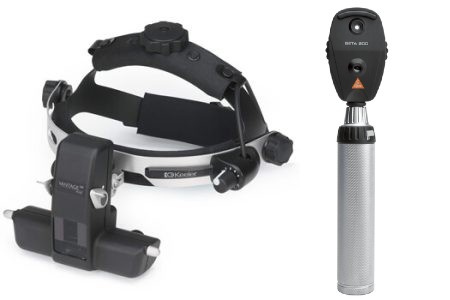Ophthalmoscope

Ophthalmoscopy (also called fundoscopy) is a test that lets a doctor see inside the back of the eye, which is called the fundus. The doctor can also see other structures in the eye. He or she uses a magnifying tool called an ophthalmoscope and a light source to see inside the eye. The test is done as part of an eye exam. It may also be done as part of a routine physical exam.
The fundus has a lining of nerve cells called the retina. The retina detects images that pass through the clear, outer covering of the eye, called the cornea. The fundus also contains blood vessels and the optic nerve.
There are two types of ophthalmoscopy.
Direct ophthalmoscopy.
The doctor uses a tool that is about the size of a small flashlight. It has many lenses that can magnify up to about 15 times.
Indirect ophthalmoscopy.
The doctor uses a small handheld lens and either a slit lamp microscope or a light attached to a headband. This test gives the doctor a wider view of the inside of the eye. It allows a better view of the fundus, even if the lens is clouded by cataracts.

